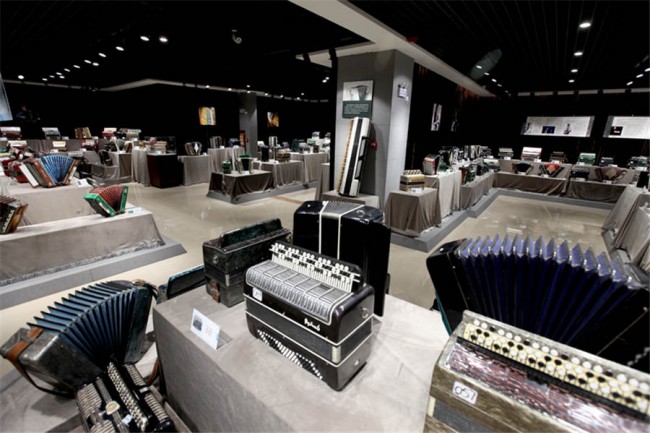









For people living in Tacheng, singing and dancing to the music of the accordion is an indispensable part of life.
The accordion is akin to a symbol of the city, and out of every 10 people there will be two or three who can play the accordion.
The Tacheng Accordion Museum, which opened in December, is the only accordion museum in Xinjiang and the only one of its kind in the country. So far, the collection includes 330 accordions from 10 countries, such as China, Russia, Germany, Italy and Ukraine, and the oldest is 103 years old.
The museum was set up by Dawran Dosanhan with the support of local government. He started to set up the museum in 2014 after spending six years collecting accordions from around the world.
The 45-year-old Kazak is an accordion enthusiast who fell in love with the instrument when he was 9 years old.
He was taking part in a wedding at a neighbor's home, and a guest began to play the accordion. Suddenly he was attracted by the beautiful music and couldn't help touching the instrument during the break. Excitement filled him and he wanted to have his own accordion.
While Dosanhan's family was not very rich, two years later his father bought him an accordion after squeezing the money out from from daily expenses.
At first, he taught himself by listening to music from the loudspeaker at school and from TV, and then he was admitted by a music class at Tacheng Normal School and began a systematic study of the accordion.
The six years' experience of collecting accordions is not a smooth way and one thing impresses him the most occurred in Kazakhstan.
In 2014, when he was collecting accordions in Kazakhstan, he met a 92-year-old Russian who had 22 accordions made in Germany during the Second World War. He wanted to purchase these accordions but the old man refused. When Dosanhan explained to him that he wanted to open a museum in China's Xinjiang Uygur autonomous region to showcase accordions from each period in history, to help people learn more about the instruments, the man happily agreed.
As Dosanhan removed these accordions, the man couldn't help shedding tears while touching the instruments affectionately, as if he was saying goodbye to his children.
This deeply touched Dosanhan, and every time he stands in the exhibition hall of the museum, he can't help recalling these memories and feels a responsibility to share and spread accordion culture.
Credit: China Daily


























